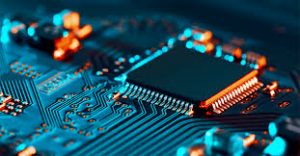PCB Assembly Differ From PCB Fabrication
The PCB assembly process involves soldering components to bare circuit boards, making them functional for electronic devices. The two main approaches are surface mount technology (SMT) and through-hole technology (THT).
A bare PCB has holes and apertures, called vias, for conducting electric currents. These are typically copper-plated and used to communicate information between different layers of a multi-layered PCB. The information is transmitted as discreteanalog or high-speed digital signals, depending on the design of a specific PCB. Vias are drilled through the different copper layers that compose the PCB, creating paths for current to travel.
For the actual assembly, most companies specializing in PCB manufacturing and assembly offer both SMT and THT. The process begins with submitting the netlist file for the PCB to an assembler, along with any other notes or requirements that have been specified. A PCB assembler will then perform what is known as a design for manufacturability check, or DFM check. This is a review of all the specifications for the PCB that will identify any potential issues with its functionality or manufacturability.
Next, the PCB goes through a stenciling step. A mechanical fixture holds the bare board in place while an applicator spreads solder paste over it. The machine evenly distributes the paste across the areas of the board where the components will be placed. The resulting viscous substance will remain in these areas after the stencil and applicator are removed.

How Does PCB Assembly Differ From PCB Fabrication?
The next stage of the pcb assembly process is a pick and place machine, which is a robotic device that places surface-mount components, or SMDs, on the bare board. These are small components that can be difficult for humans to handle, so this is an automated process that uses high-powered cameras to “see” the PCBs. The cameras are arranged at various angles to view the SMDs from different angles, and the system recognizes and records any that are not soldered correctly.
Once the SMDs are in place, the board is passed into a reflow oven, which heats it up to a point at which the metals involved melt and solidify. The board then undergoes a final inspection. Some EMS companies use a more thorough testing process than others, with some going as far as to test the circuit boards for accelerated life tests and mechanical shocks.
A turnkey EMS partner will be able to take the stress out of PCB assembly by handling all communication with vendors, as well as managing production schedules and delivery times. It also eliminates the risk of miscommunication between a customer and their supplier, which can cause delays, budget issues, or even product failures. By choosing a turnkey supplier, customers can ensure that the products they receive are high-quality and up to standards. This is particularly important in the electronics industry, where a single component can make or break an entire device. Investing in the right PCB assembly services will help to prevent costly mistakes down the line.

